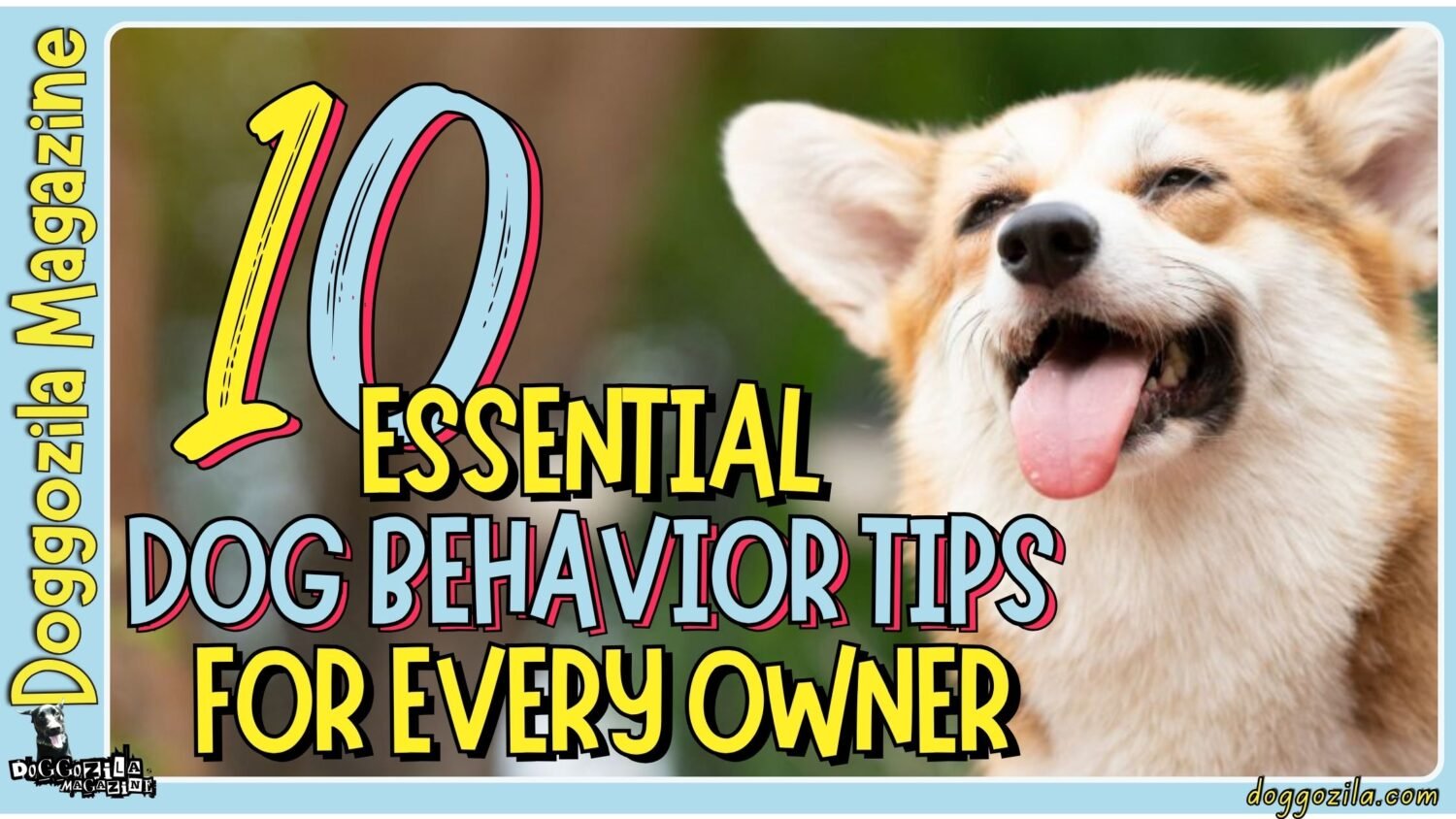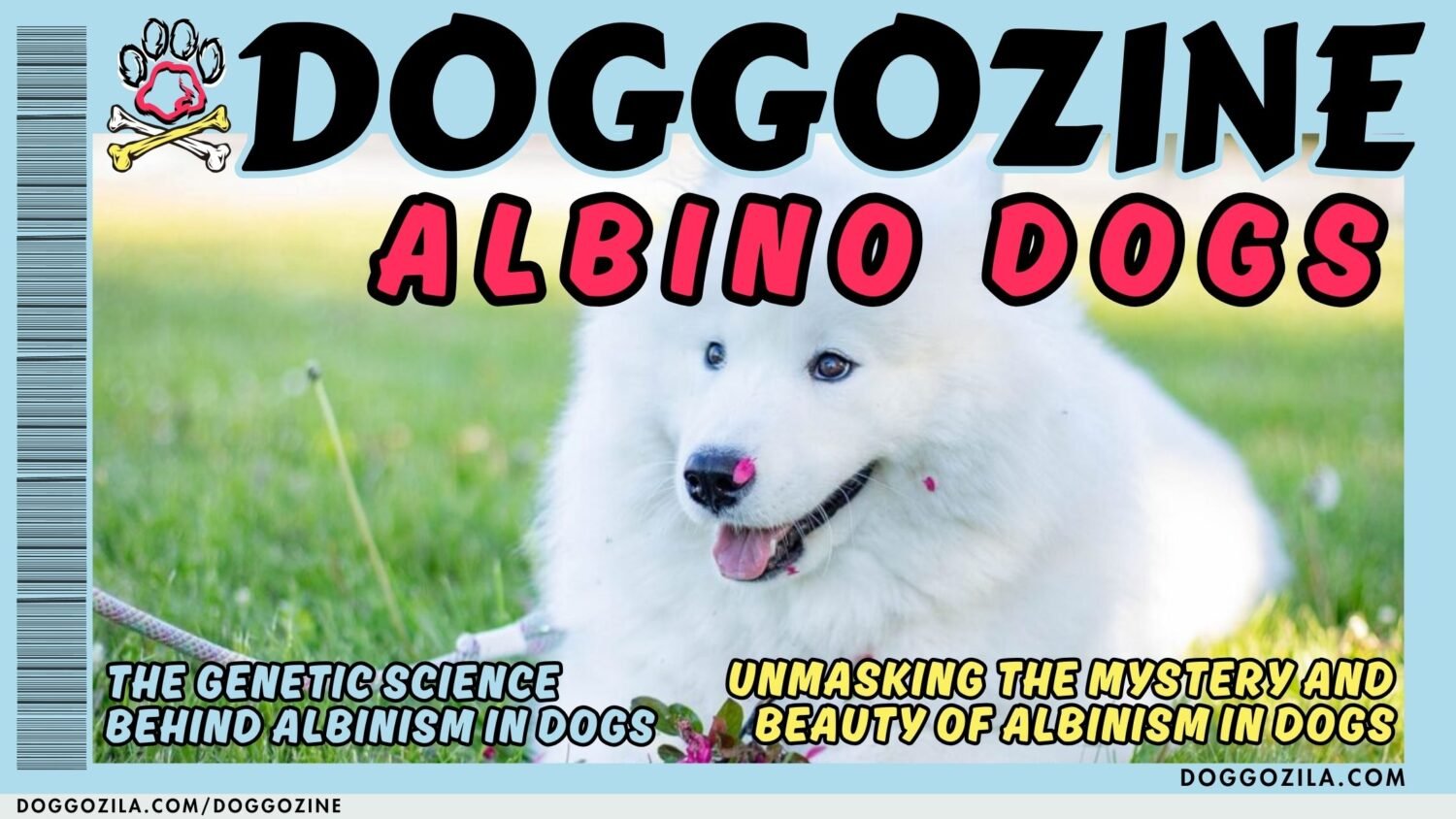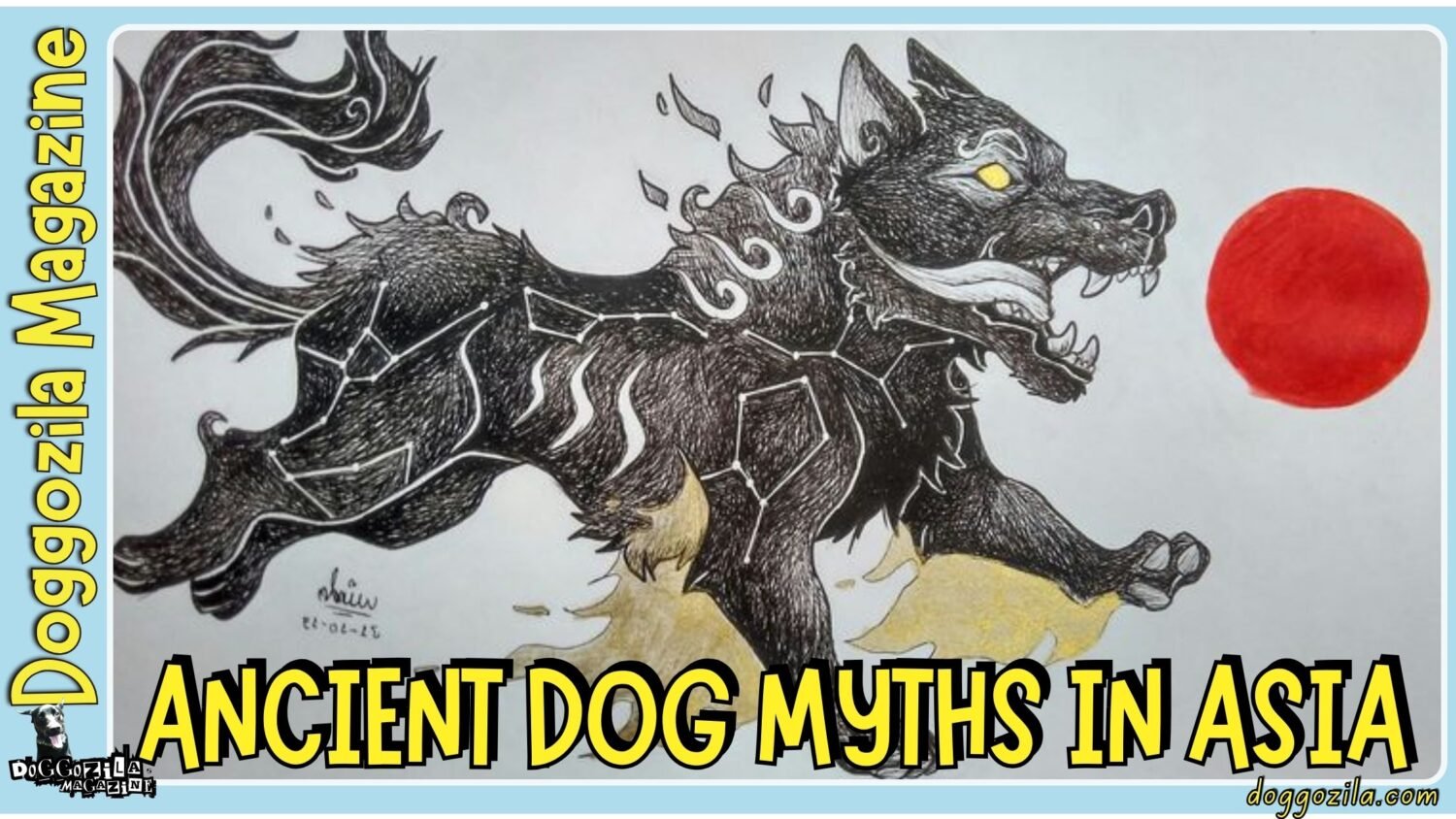The bond between a human and their dog is built on silent communication, intuitive understanding, and an unwavering sense of loyalty. Many pet owners have stories of their dog growling at a seemingly friendly stranger, barking at an empty corner of a room, or acting as a furry barrier between them and another person. This leads us to the fascinating and spine-tingling question, can dogs sense evil?
By exploring the incredible power of their senses, their ancient instincts, and the countless anecdotes from owners, we can begin to unravel the mystery of how our pets perceive intentions and threats that are completely invisible to us. This exploration is not about fear, but about honoring the incredible depth of their perception and the protective bond we share with our four-legged guardians.
„Your dog’s nose knows more than just treats and walks, it might actually be able to sniff out evil intent.“

THE SCIENCE BEHIND THE SIXTH SENSE AND IF DOGS CAN SENSE EVIL?
The question “Can dogs sense evil?” has intrigued pet owners, scientists, and spiritual thinkers alike. While dogs may not grasp morality in the human sense, their heightened senses allow them to detect subtle cues that often go unnoticed by us. From shifts in body language to changes in scent caused by stress hormones, dogs are wired to respond to danger and discomfort.
This instinctual awareness forms the foundation of what many interpret as a dog’s ability to sense evil. Dogs have evolved alongside humans for thousands of years, developing an uncanny ability to read our emotions and intentions. Their reactions often reflect a blend of sensory input and emotional resonance, making them powerful allies in detecting unseen threats.
Can Dogs Sense Evil Through Smell and Hormonal Changes?
Dogs possess up to 300 million olfactory receptors, compared to a human’s mere 6 million, making their sense of smell incredibly powerful. When a person experiences fear, anger, or malicious intent, their body releases hormones like cortisol and adrenaline, chemical signals that dogs can detect. So, can dogs sense evil through these scent changes? Many researchers believe they can, especially when paired with behavioral cues.
A 2019 study in the Journal of Veterinary Dermatology pointed out that dogs reacted more defensively to individuals with elevated cortisol levels, suggesting a link between scent and perceived threat. These reactions are often subtle, ears pinned back, tail lowered, or a sudden refusal to approach. Dogs may also sniff more intensely or circle a person they find suspicious.
In households with multiple pets, dogs often alert others through body language when they detect something off. This kind of hormonal detection is not limited to humans; dogs can sense illness and emotional distress in other animals too. Their noses are essentially emotional radars, tuned to pick up shifts in energy and intent. That’s why many therapy dogs are trained to respond to panic attacks or emotional breakdowns.
Can Dogs Sense Evil in a Person’s Energy or Vibe?
Beyond scent, dogs are sensitive to energy shifts and emotional states. They often react to people who emit negative energy, even if that person appears calm on the surface. Can dogs sense evil in this way? Anecdotal evidence and behavioral studies suggest yes, dogs may growl, hide, or become agitated around individuals with harmful intent.
This sensitivity is part of their survival instinct, honed over thousands of years of evolution alongside humans. Dogs often mirror the emotional climate of a room, becoming anxious in tense environments and relaxed in peaceful ones. They can pick up on micro-expressions and subtle shifts in posture that signal discomfort or aggression.
In fact, many dog trainers use energy cues to teach dogs how to respond to different emotional states. Dogs raised in chaotic or abusive homes often develop heightened sensitivity to emotional volatility. Their reactions aren’t just instinctual, they’re learned through experience and association. This makes them excellent judges of character, especially in unfamiliar social settings.
Can Dogs Sense Evil in Supernatural or Spiritual Contexts?
Some pet owners report their dogs barking at empty corners, refusing to enter certain rooms, or reacting to unseen presences. While science doesn’t confirm the existence of spirits, the question remains, can dogs sense evil in a supernatural sense? Dogs’ acute hearing and smell may pick up on environmental changes we can’t perceive, leading to behaviors that seem otherworldly.
Whether it’s a ghost or just a draft, their reactions often prompt deeper reflection. Dogs have been part of spiritual rituals and folklore for centuries, often portrayed as guardians of sacred spaces. In some cultures, dogs are believed to see spirits or detect curses. Their reactions in these contexts are often interpreted as warnings or signs of protection.
Even skeptics admit that dogs sometimes behave in ways that defy logical explanation. Whether it’s a sudden growl in an empty room or a refusal to cross a threshold, these moments feel charged with meaning. Dogs may not understand the supernatural, but they certainly respond to energy shifts that feel eerie or unsettling.
🔑 Key Points: Dogs cannot comprehend human morality, but their heightened senses allow them to detect subtle physical cues like shifts in body language and scent changes, which forms the basis of what we interpret as sensing “evil.”

BREED DIFFERENCES AND BEHAVIORAL PATTERNS OF DOGS
Not all dogs react the same way to perceived threats, which raises the question, can dogs sense evil differently depending on their breed? Working breeds like German Shepherds and Dobermans are trained to detect danger and may show stronger reactions to negative energy. Toy breeds, while less imposing, often display avoidance behaviors or heightened anxiety around certain individuals.
Breed-specific traits influence how dogs interpret and respond to emotional cues. Some breeds are naturally more alert and reactive, while others are laid-back and less likely to show concern. Understanding your dog’s breed tendencies can help you interpret their behavior more accurately in tense situations.
Do Protective Breeds Have More Stronger Senses?
Protective breeds are genetically predisposed to guard their families and territory. Can dogs sense evil more acutely when bred for vigilance? Studies suggest yes, these dogs often show early warning signs like stiff posture, growling, or blocking behavior when they detect something off. Their training amplifies natural instincts, making them reliable indicators of discomfort or threat.
Breeds like Belgian Malinois and Rottweilers are often used in police and military work for this reason. These dogs are not just physically capable, they’re emotionally attuned to danger. Their reactions are often immediate and intense, signaling a strong internal response to perceived evil.
Even without formal training, these breeds tend to be more reactive to strangers or unfamiliar energy. Owners often report their dogs behaving differently around certain people, even before any obvious threat emerges. This heightened awareness makes protective breeds excellent companions for those seeking emotional and physical security.
Can Dogs Sense Evil in Strangers Versus Familiar People?
Dogs form strong bonds with their humans and can distinguish between familiar and unfamiliar individuals. Can dogs sense evil more easily in strangers? Often, yes. They may react with suspicion or fear toward people who exhibit erratic behavior, aggressive body language, or emotional instability.
However, dogs can also detect shifts in familiar people’s energy, responding to stress, anger, or sadness with concern or avoidance. This dual sensitivity makes dogs powerful emotional mirrors. They often act as early warning systems, alerting owners to changes in mood or behavior. Dogs may bark, whine, or retreat when someone they know begins to act differently.
These reactions are not random, they’re based on accumulated experience and emotional memory. Dogs remember past interactions and use them to interpret future ones. If someone has previously caused harm or discomfort, a dog may remain wary indefinitely. Their ability to sense evil is rooted in both instinct and learned behavior.
Can Dogs Sense Evil in Children or Vulnerable Individuals?
Dogs often act protectively around children, the elderly, or those with disabilities. Can dogs sense evil when these individuals are threatened? Their reactions, such as standing between the person and a perceived threat, suggest a deep intuitive understanding of vulnerability.
This behavior reinforces the belief that dogs can detect harmful intent and respond accordingly. Dogs seem to recognize fragility and innocence, often adjusting their behavior to be gentler and more attentive. In therapy settings, dogs are trained to comfort children with trauma or anxiety.
Their presence alone can reduce cortisol levels and promote emotional healing. When danger arises, these dogs often become alert and defensive, even if they’re normally calm. Their protective instincts kick in, driven by a desire to shield those they perceive as needing help. This makes them invaluable companions in both emotional and physical safety.
🔑 Key Points: A dog’s breed influences its reaction to perceived threats, protective working breeds are more likely to show strong defensive behaviors, while other breeds may simply avoid or show anxiety.

EMOTIONAL INTELLIGENCE AND EMPATHY IN DOGS
Dogs are emotionally intelligent creatures capable of reading facial expressions, tone of voice, and body language. Can dogs sense evil through emotional cues? Their ability to mirror human emotions and respond to distress makes them sensitive to subtle signs of malice or discomfort.
This empathy is not just heartwarming, it’s a survival tool. Dogs often act as emotional barometers, picking up on tension before it escalates. Their reactions can be early indicators of conflict, unease, or even danger, making them invaluable companions in emotionally charged environments.
Can Dogs Sense Evil Through Facial Recognition?
Research from Emory University shows that dogs can recognize human faces and associate them with emotional states. Can dogs sense evil by reading expressions? Dogs often react negatively to scowls, glares, or tense jawlines, interpreting these as signs of aggression. Their reactions may include barking, growling, or retreating, especially if the person’s energy feels threatening.
Dogs are especially attuned to eye contact, prolonged staring can be perceived as a threat, while soft eyes signal safety. Over time, dogs build emotional maps of familiar faces, learning who to trust and who to avoid. This recognition is not just visual, it’s layered with scent memory and emotional association.
Dogs may even react to photos or videos of people they’ve had negative experiences with. Their ability to read micro-expressions rivals that of trained psychologists. In emotionally volatile households, dogs often become hyper-vigilant, scanning faces for signs of escalation. This makes them not only intuitive but also emotionally responsive in ways that feel deeply human.
Can Dogs Sense Evil in Tone and Voice Modulation?
Dogs respond to tone more than words. A harsh, clipped voice can trigger anxiety, while a soothing tone calms them. Can dogs sense evil through vocal cues? Yes, dogs often react to aggressive or deceptive tones with unease, even if the words themselves are benign. Their ears perk up at changes in pitch, volume, and cadence, interpreting these shifts as emotional signals.
Dogs raised in loud, chaotic environments may become desensitized to yelling, but still react to subtle vocal tension. In contrast, dogs from peaceful homes may show immediate distress when voices rise. This sensitivity makes them excellent companions for people with emotional regulation challenges.
They often act as calming agents, responding to tone shifts with nuzzling or grounding behavior. Dogs trained in therapy work are especially adept at detecting vocal stress and responding with comfort. Their reactions to tone are not just instinctual, they’re deeply empathetic and often therapeutic.
Can Dogs Sense Evil Through Body Language and Movement?
Sudden movements, looming posture, or clenched fists can signal danger to a dog. Can dogs sense evil through these physical cues? Absolutely. Dogs are masters of reading body language and often react before a person even speaks. Their ability to detect tension or aggression helps them protect themselves and their humans.
Dogs often mirror the posture of those they trust, relaxed shoulders, soft eyes, and open hands signal safety. In contrast, rigid stances and fast movements trigger defensive reactions. Dogs may position themselves between their owner and a perceived threat, using their body as a barrier.
This behavior is common in protective breeds but can be seen in all dogs when they feel unsafe. Their reactions are shaped by both instinct and learned experience. Dogs who’ve experienced trauma may be hyper-aware of body language, reacting strongly to even minor cues. This makes them incredibly perceptive and responsive to human behavior.
🔑 Key Points: Dogs can smell chemical changes like the release of stress hormones (cortisol, adrenaline), allowing them to detect human emotional states such as fear or anger that may be associated with negative intent.
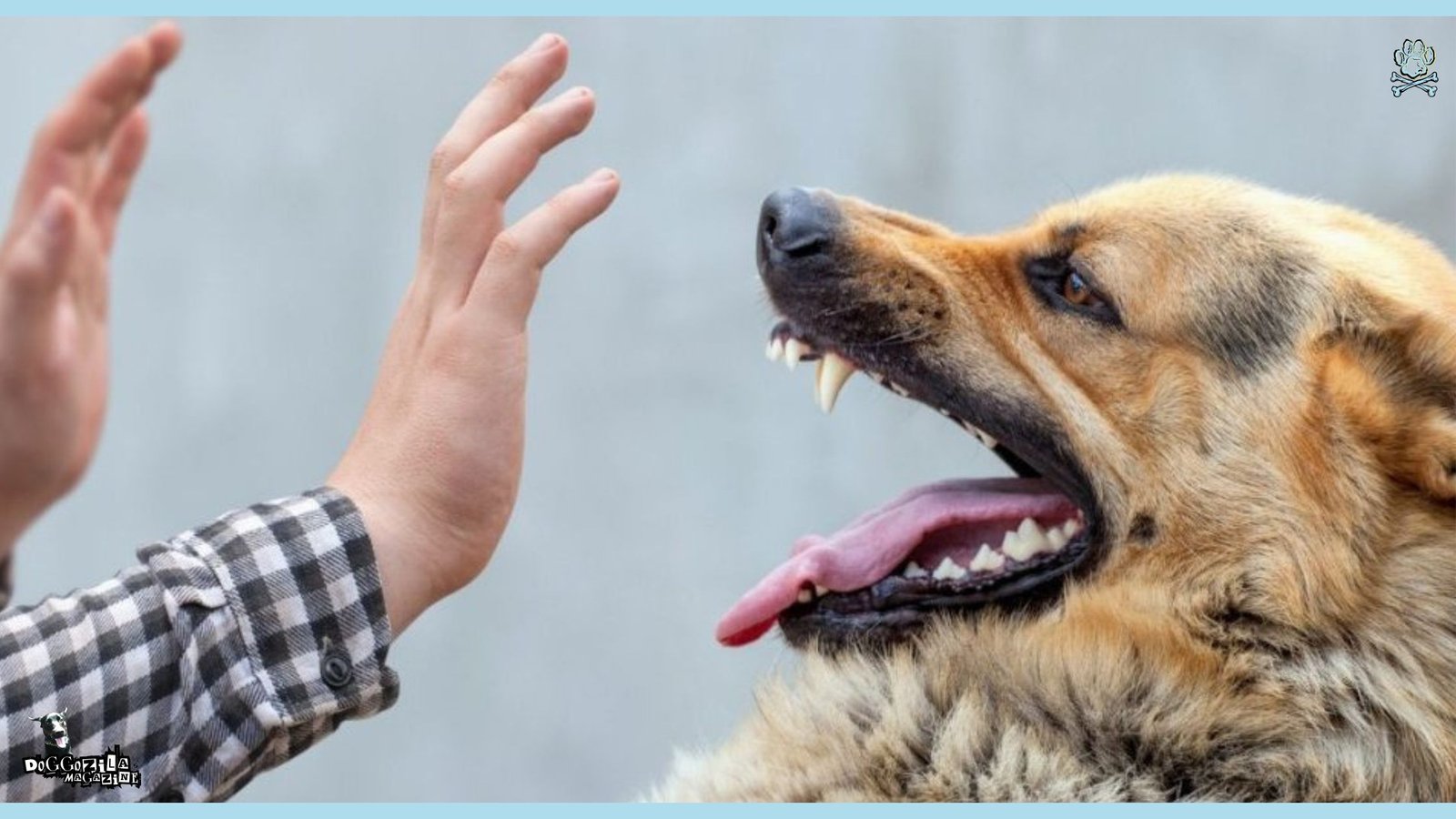
REAL-LIFE STORIES AND CASE STUDIES
Many dog owners have stories of their pets reacting strongly to certain individuals or situations. Can dogs sense evil in real-life scenarios? These accounts, while anecdotal, offer compelling evidence of dogs’ intuitive abilities.
From growling at abusive partners to refusing to enter haunted houses, dogs often act as emotional barometers. Their behavior in these moments feels purposeful, as if they’re trying to warn or protect. These stories span cultures, generations, and breeds, reinforcing the belief that dogs possess a unique sensitivity to energy and intent.
Can Dogs Sense Evil in Abusive or Dangerous People?
In domestic abuse cases, dogs have been known to intervene or alert others to danger. Can dogs sense evil in these individuals? Their reactions like growling, hiding, or becoming protective often mirror the emotional climate of the household.
A 2023 study from the ASPCA found that dogs in abusive homes showed heightened sensitivity to aggressive behavior, supporting the idea that they can detect harmful intent. These dogs often become hyper-vigilant, watching for signs of escalation and positioning themselves to protect vulnerable family members.
Their behavior is not random, it’s shaped by repeated exposure to emotional volatility. Dogs may bark at abusers, refuse to leave a child’s side, or even attempt to block doors during confrontations. These actions suggest a deep understanding of threat and a desire to intervene.
In shelters, dogs rescued from abusive homes often show signs of trauma, but also heightened empathy. Their ability to sense evil is not just instinctual, it’s experiential and deeply emotional. These dogs often become exceptional therapy animals, using their past to help others heal.
Can Dogs Sense Evil in Paranormal Investigations?
Paranormal investigators often bring dogs to haunted sites, citing their ability to detect unseen presences. Can dogs sense evil in these environments? While science remains skeptical, dogs’ reactions such as barking at empty spaces or refusing to enter certain rooms, suggest they perceive something unusual.
Their behavior often aligns with reported paranormal activity, adding credibility to these claims. Dogs may whine, tremble, or stare at corners where no visible stimulus exists. In some cases, dogs have led investigators to specific locations where energy readings spike. These reactions are consistent across breeds and settings, suggesting a shared sensitivity.
Whether it’s electromagnetic shifts or subtle vibrations, dogs seem to detect environmental changes that humans miss. Their reactions are often immediate and intense, prompting further investigation. Even skeptics admit that dogs behave strangely in certain locations. While we may never prove the supernatural, dogs’ behavior continues to fuel curiosity and belief.
Can Dogs Sense Evil in Everyday Encounters?
Even in mundane settings, dogs may react to people with bad intentions. Can dogs sense evil during a walk in the park or a visit to the vet? If a dog suddenly becomes agitated or fearful around a stranger, it may be sensing something off. These moments remind us to trust our pets’ instincts, they often see what we cannot.
Dogs may pull away from certain individuals, refuse treats, or bark without provocation. Their reactions are often subtle but consistent, signaling discomfort or distrust. In public spaces, dogs may act as social filters, guiding their owners away from danger. Their behavior can be especially helpful for children or vulnerable adults.
Dogs trained in emotional support roles often alert caregivers to unsafe situations. These everyday encounters reinforce the idea that dogs are attuned to energy and intent. Their ability to sense evil is not limited to dramatic moments, it’s woven into daily life.
🔑 Key Points: Beyond scent, dogs are highly sensitive to human energy and emotional states, often reacting to negative vibes through agitation or avoidance, a skill honed by evolution and experience.
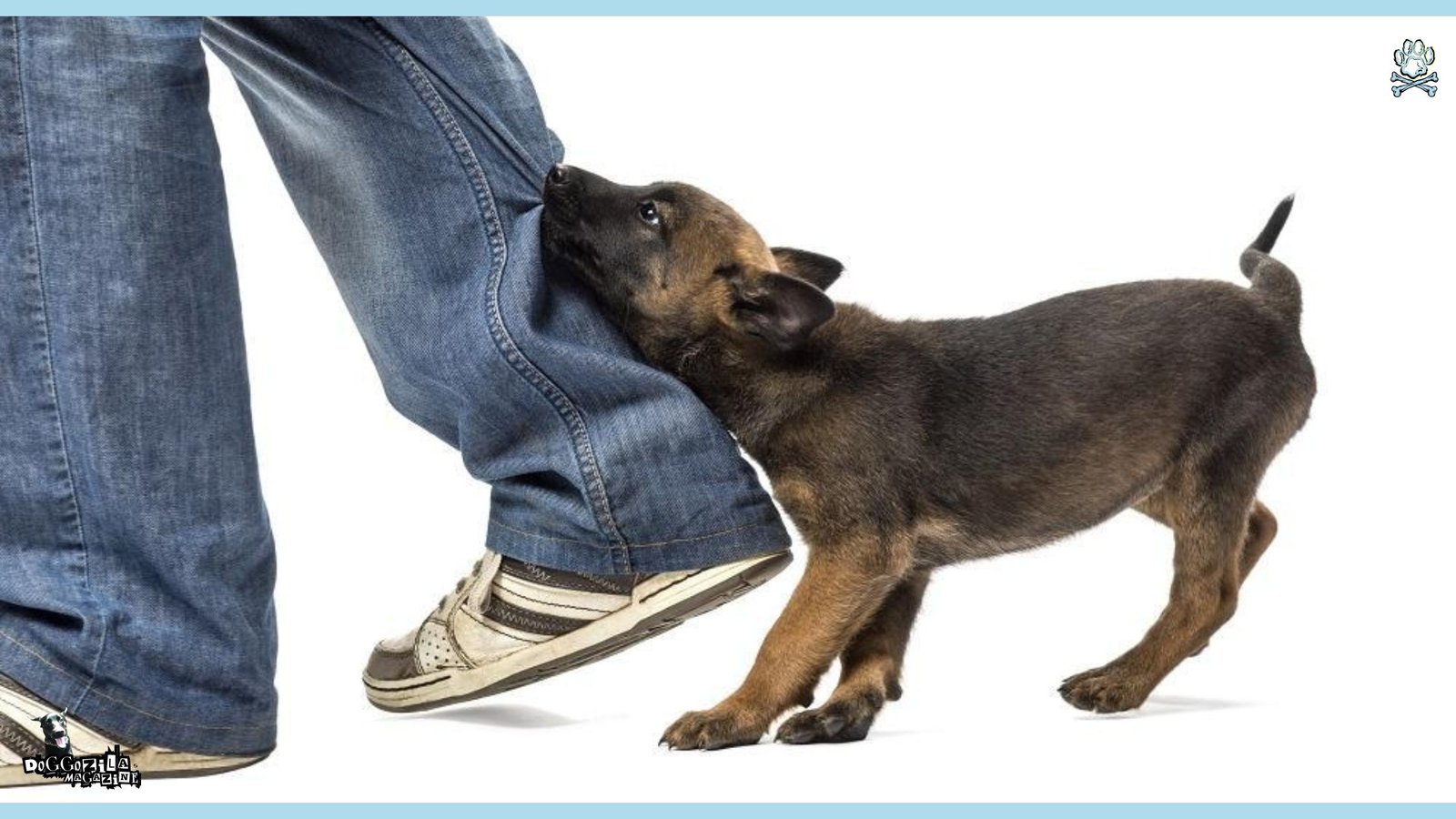
TRAINING AND ENHANCING INTUITION IN DOGS
While dogs are naturally intuitive, training can sharpen their ability to detect threats. Can dogs sense evil more effectively with guidance? Yes, behavioral conditioning and exposure to different environments help dogs refine their instincts. This is especially true for service dogs, therapy dogs, and those in law enforcement.
Dog’s training builds on natural sensitivity, teaching them to respond to specific cues and emotional states. With consistent reinforcement, dogs can become even more accurate in identifying discomfort, danger, or malicious intent.
Can Dogs Sense Evil When Trained for Protection?
Protection training teaches dogs to respond to specific cues, enhancing their natural vigilance. Can dogs sense evil more accurately with this training? Absolutely. These dogs learn to identify suspicious behavior, react to aggression, and protect their handlers.
Breeds like German Shepherds, Belgian Malinois, and Dobermans are often chosen for their intelligence and responsiveness. During training, dogs are exposed to various scenarios that simulate real-world threats, helping them build a reliable response system. They learn to differentiate between normal human behavior and signs of hostility or deceit.
This makes them not only physically capable but emotionally attuned to danger. Their reactions are often immediate like barking, blocking, or alerting their handler with body language. Even in crowded environments, trained dogs can zero in on individuals who emit negative energy. Can dogs sense evil in these moments? Their behavior suggests they can, and they often act before any human notices a problem.
Can Dogs Sense Evil in Therapy and Emotional Support Roles?
Therapy dogs often work with trauma survivors, responding to emotional shifts with comfort and calm. Can dogs sense evil in these contexts? Their ability to detect distress and provide support suggests a deep emotional awareness. These dogs are trained to recognize signs of anxiety, panic, and emotional dysregulation. They respond with gentle nudges, leaning in, or lying beside the person to offer grounding.
In some cases, therapy dogs have alerted caregivers to emotional breakdowns before they happen. Their sensitivity to energy and emotion makes them ideal companions for people with PTSD, depression, or anxiety. Can dogs sense evil in environments where emotional harm is present?
Many handlers believe they can, especially when dogs react to individuals who trigger fear or discomfort. Their reactions are often subtle but consistent, signaling unease or protective instincts. These dogs don’t just comfort, they assess and respond to emotional landscapes with remarkable precision. Their presence can transform a space, making it safer and more emotionally stable.
Can Dogs Sense Evil Through Repetition and Exposure?
Repeated exposure to different people and environments helps dogs build a database of experiences. Can dogs sense evil more reliably with this exposure? Yes, dogs learn to associate certain behaviors or energies with discomfort, refining their reactions over time. This experiential learning is key to developing intuition.
Dogs who frequently encounter tense or hostile individuals become more adept at identifying similar energy in the future. Their reactions become faster and more accurate, shaped by memory and emotional association. This is especially true for dogs in public service roles, who encounter a wide range of human behavior.
Over time, they develop a nuanced understanding of body language, tone, and scent. Can dogs sense evil based on past experiences? Their behavior suggests they can, often avoiding or reacting to people who resemble past threats. This learned sensitivity makes them powerful allies in both emotional and physical safety. Their intuition is not just instinct, it’s a refined skill built through experience.
🔑 Key Points: Protective breeds are genetically predisposed and often trained for vigilance, making them more reactive and reliable at detecting discomfort or threat through intensified natural instincts.

SPIRITUAL AND CULTURAL PERSPECTIVES OF THE DOG’S SENSE
Across cultures, dogs are seen as guardians, protectors, and spiritual guides. Can dogs sense evil in a metaphysical sense? Many traditions believe so.
From ancient Egypt to modern folklore, dogs are often portrayed as beings with access to unseen realms. Their reactions to energy shifts, unseen presences, and emotional changes are interpreted as signs of spiritual awareness. Whether through myth or experience, dogs continue to be viewed as intuitive beings with a connection to the invisible.
Dogs in Folklore and Mythology Through The Ages
In Greek mythology, Cerberus guarded the gates of the underworld, sensing souls and spirits. Can dogs sense evil in these stories? They’re often depicted as protectors against malevolent forces, reinforcing their role as intuitive beings. In Norse mythology, dogs were believed to guide souls to the afterlife, sensing purity and corruption.
Ancient Egyptians revered dogs for their loyalty and spiritual sensitivity, often burying them with their owners. In Celtic lore, dogs were seen as guardians of sacred spaces, reacting to curses or dark magic. These stories reflect humanity’s deep belief in dogs’ spiritual sensitivity.
Even today, dogs are included in rituals and ceremonies meant to cleanse or protect energy. Their reactions are often interpreted as spiritual warnings or confirmations. Can dogs sense evil in these contexts? Their behavior suggests they respond to more than just physical stimuli. Whether myth or reality, dogs continue to play a role in spiritual protection and guidance.
Related Article Recommendation: Ancient Egyptian Dogs and Breeds Beyond Egypt
Can Dogs Sense Evil in Religious Contexts?
In some religions, dogs are considered sacred or spiritually attuned. Can dogs sense evil according to these beliefs? Yes, many faiths view dogs as capable of detecting negative energy or spiritual danger. For example in Hinduism, dogs are associated with Bhairava, a fierce guardian deity who protects against evil.
In Zoroastrianism, dogs are believed to ward off evil spirits and are included in funeral rites. Also in Christianity, dogs are often seen as symbols of loyalty and protection, appearing in stories of saints and miracles. Their presence is considered a blessing, especially in homes where emotional or spiritual healing is needed. Can dogs sense evil in religious rituals?
Their reactions like calmness, agitation, or avoidance are often interpreted as spiritual indicators. Many religious leaders believe dogs can detect dishonesty, malice, or spiritual imbalance. Their behavior is respected and sometimes used to guide decisions or actions. Whether through faith or observation, dogs continue to be seen as spiritual sentinels.
Dogs in Modern Spiritual Practices
Today, energy healers and spiritual practitioners often include dogs in their sessions. Can dogs sense evil in these settings? Their calm presence and reactions to energy shifts suggest they play a role in emotional and spiritual healing. Dogs may react to blocked chakras, emotional trauma, or negative energy fields.
Practitioners often observe dogs gravitating toward people in need of healing or avoiding those with heavy emotional burdens. Their behavior is used to guide energy work, meditation, and emotional release. Can dogs sense evil in these moments? Many believe they can, especially when dogs show discomfort or agitation around certain individuals.
Their reactions are seen as intuitive assessments of energy and intent. Dogs may lie beside someone during a healing session, offering grounding and emotional support. Their presence enhances the spiritual experience, creating a sense of safety and connection. Whether trained or instinctual, their sensitivity to energy makes them valuable partners in modern spiritual work.
Related Article Recommendation: Corgis and Fairies: Legendary Ancient Connection
🔑 Key Points: While unproven by science, dogs’ acute senses may pick up on environmental changes humans cannot perceive, leading to behaviors that are often interpreted as reactions to the supernatural.
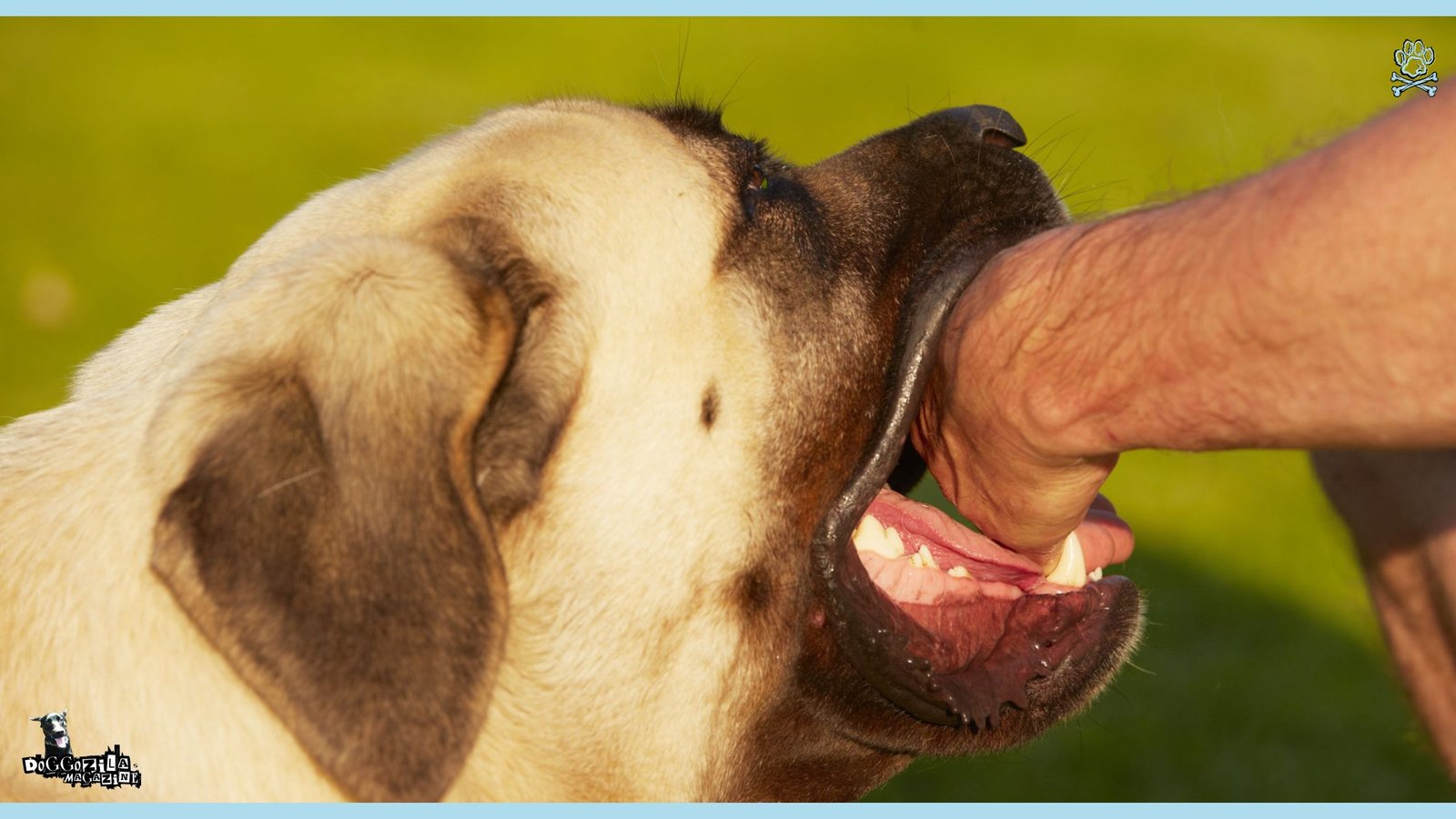
HOW TO RECOGNIZE THE SIXTH SENSE SIGNS IN YOUR OWN PET?
Understanding your dog’s behavior is key to interpreting their reactions. Can dogs sense evil in your daily life? Watch for signs like growling, avoidance, or sudden agitation. These cues may indicate discomfort or perceived threat, even if you don’t see it.
Dogs often act as emotional mirrors, reflecting the energy around them. By learning to read their signals, you can better navigate social situations and protect your emotional well-being.
Can Dogs Sense Evil Through Sudden Behavioral Changes?
If your dog suddenly becomes fearful or aggressive around a person, it may be sensing something you’re not. Can dogs sense evil through these shifts? Their reactions like trembling, barking, hiding, often signal discomfort or perceived danger. These changes may be temporary or persistent, depending on the situation.
Dogs may refuse to enter a room, avoid eye contact, or cling to their owner when they feel unsafe. These behaviors are not random, but they’re responses to energy, emotion, and intent. Can dogs sense evil in familiar environments? Yes, if something changes, they’ll often be the first to notice.
Their reactions may seem exaggerated, but they’re rooted in genuine perception. Dogs may also become hyper-alert, scanning the room or pacing. These signs suggest they’re processing something unusual or threatening. Trusting these instincts can help you respond to situations with greater awareness and caution.
Can Dogs Sense Evil in Social Settings and Public Spaces?
In parks, cafes, or crowded events, dogs often act as social filters. Can dogs sense evil in these environments? Their reactions like pulling away, barking, or refusing to engage can indicate discomfort with certain individuals. Dogs may sense tension, aggression, or emotional instability, even when it’s masked by polite behavior.
Their ability to read energy makes them excellent judges of character. Owners often report their dogs reacting negatively to people who later reveal harmful intentions. These moments reinforce the idea that dogs perceive more than we do. Can dogs sense evil in strangers? Their behavior suggests they can, often acting before any human picks up on the threat.
In public spaces, dogs may guide their owners away from danger, acting as intuitive protectors. Their reactions are shaped by both instinct and experience, making them reliable companions in unfamiliar settings. Learning to interpret these cues can enhance your safety and deepen your bond.
Can Dogs Sense Evil in Domestic and Emotional Environments?
At home, dogs often reflect the emotional climate of their surroundings. Can dogs sense evil in domestic settings? Yes, dogs may react to tension, hostility, or emotional imbalance with anxiety or protectiveness. Their behavior often shifts in response to arguments, stress, or emotional trauma. Dogs may become clingy, restless, or defensive when they sense something is wrong.
These reactions are not just emotional, but they’re energetic. Can dogs sense evil in family dynamics? Their behavior suggests they can, often acting as emotional mediators or silent sentinels. Dogs may position themselves between family members during conflict, or retreat to quiet spaces when energy becomes overwhelming.
They often respond to subtle cues like tone, posture, and even the way someone enters a room. Their reactions can be early warnings of emotional escalation or unresolved tension. By observing these shifts, owners can gain insight into the emotional health of their household and take steps to restore balance.
🔑 Key Points: Dogs are often more suspicious of strangers exhibiting erratic behavior but can also detect negative shifts in the energy of familiar people, acting as emotional mirrors.

FINAL THOUGHTS: CAN DOGS SENSE EVIL AND WHAT THAT MEANS FOR US
So, can dogs sense evil? While science may not fully define “evil,” dogs undeniably react to energy, emotion, and intent in ways that often feel profound. Their sensitivity to scent, tone, body language, and emotional shifts makes them exceptional companions and protectors.
Whether through instinct, experience, or spiritual resonance, dogs often detect what we overlook. Their reactions, subtle or dramatic can guide us toward safer, more emotionally aware choices. Trusting your dog’s intuition isn’t superstition, but it’s a partnership built on thousands of years of co-evolution, empathy, and mutual understanding.
Listening to the Warning
The question of can dogs sense evil may never have a definitive scientific answer that satisfies everyone, but for the countless owners who have witnessed these profound acts of protection, the evidence is felt in their bones. These behaviors form a legacy of loyalty that speaks to a dog’s deep connection to its family. They teach us about trust, intuition, and the purest form of protection. This intuitive warning is a testament to a bond that is so powerful it strives to communicate danger even when the threat is hidden from our own senses.
Trusting the Bond You Share
The decision to trust your dog’s judgment is ultimately about trusting the bond you share. This relationship, built on mutual love and non-verbal communication, is a powerful source of information. Honoring your dog’s reaction is a way of honoring that connection.
A Balanced Approach: Neither Dismissing nor Blindly Believing
The healthiest approach is one of balanced curiosity. Don’t dismiss your dog’s reaction outright, but don’t automatically assume every growl is a prophecy of doom. Use it as a data point. Be more observant, be more cautious, and trust your own instincts in tandem with your dog’s.
The Ultimate Act of Love: Dog’s Desire to Protect
Regardless of the mechanism, the underlying motivation for a dog’s warning is almost always a desire to protect their beloved family. Whether they are sensing evil or simply sensing a rapid heartbeat, their action is an act of love. And that, in the end, is the most important thing to remember.
Have you ever watched your dog growl at a seemingly friendly stranger and wondered if they were sensing a hidden darkness you couldn’t see?

That uncanny moment your dog plants itself between you and another person, hair raised, is more than just instinct, it’s a glimpse into their profound ability to perceive the unseen.

